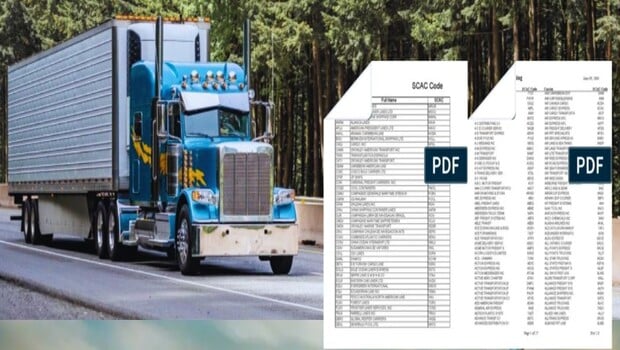
October 10, 2023

1926 Views

5 min read
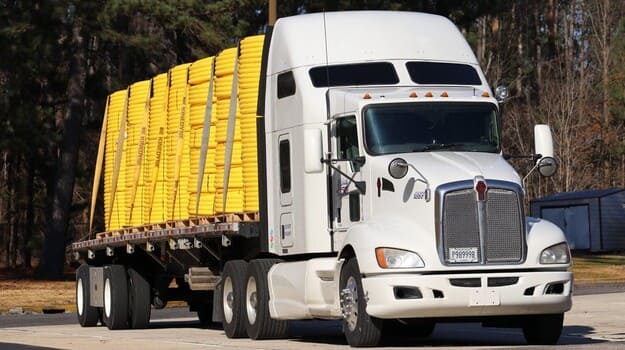
June 8, 2023

1497 Views

9 min read
If you’re new to driving flatbed trailers and securing your loads, it can feel overwhelming to get started. Even for experienced drivers, it remains a challenging and demanding job. Fortunately, with the proper tools and knowledge, you can secure your loads and avoid causing damage by doing it incorrectly.
When it comes to securing loads on flatbed trailers, the good folks at FleetCare have the experience you need in your corner. We possess the knowledge and expertise to guide you through every step. Whether it’s learning the ins and outs of transporting loads on a flatbed trailer or effectively loading and unloading trucks, we’ve got you covered. With this guide’s help, loading trucks and securing flatbed loads has become more straightforward than ever.
To start, having accurate information and data at your disposal is essential. For example, if you are engaged in commercial hauling, the shipper will likely provide you with a bill of lading containing precise weights and dimensions. It is crucial to thoroughly review these figures individually and collectively to ensure you properly secure the load using suitable equipment.
Begin by calculating the working load limit of your flatbed trailer. This will allow you to subtract the trailer’s weight and determine the maximum load capacity it can handle. Next, assess the capabilities of your tiedown equipment, such as chains, straps, and fastening rings. Finally, familiarize yourself with the working load limit of each piece of equipment to perform additional calculations.
Generally, it is important to ensure that the combined working load limit of the chains, straps, or rings exceeds the working load limit of the items you are transporting. You should also note that goods or equipment transported can vary greatly in shape and size. For instance, you might have to ensure the safety of a motorcycle or car during one journey, while on another trip, you might need to secure a shipping container. Each task may require a different approach. Regarding containers, most of the calculations have already been done for you.
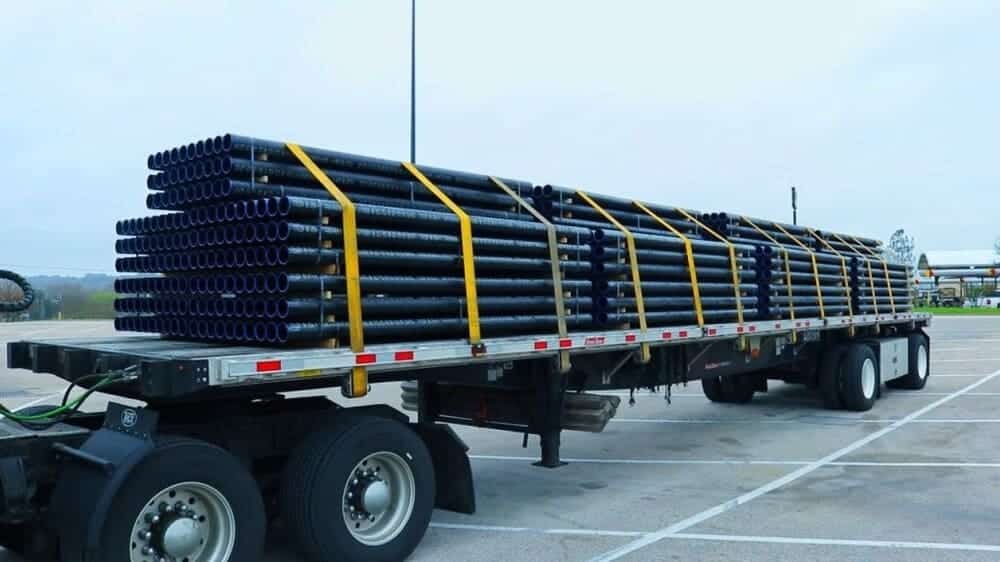
While smaller loads can be secured using traditional methods on the back of flatbed, larger loads like shipping containers require a standardized industry approach utilizing twist locks. These twist locks are widely used worldwide and adhere to the International Standards Organization (ISO) regulations. In addition, they are simple to activate and ensure that your container remains securely in place if proper care is taken.
A twist lock consists of two parts, namely the female and male connectors. Even in a significant accident, these locks maintain their integrity. Once engaged, they provide a more effective solution than chains or straps. Different types of twist locks are available. Typically, the base of the lock is bolted to the flatbed’s surface before introducing the container. The container’s underside has corresponding holes that align with the “male” part of the twist lock mechanism. The lever should then be shifted into the locking position to secure the container.
In cases where you need to stack containers, specific twist locks are designed for that purpose. If you plan to ship multiple containers using your flatbed, you can purchase modified lock mechanisms that sit flush with the surface when installed. This facilitates easier loading and unloading. Additional twist lock connectors can be used to secure containers side-by-side or end-to-end.
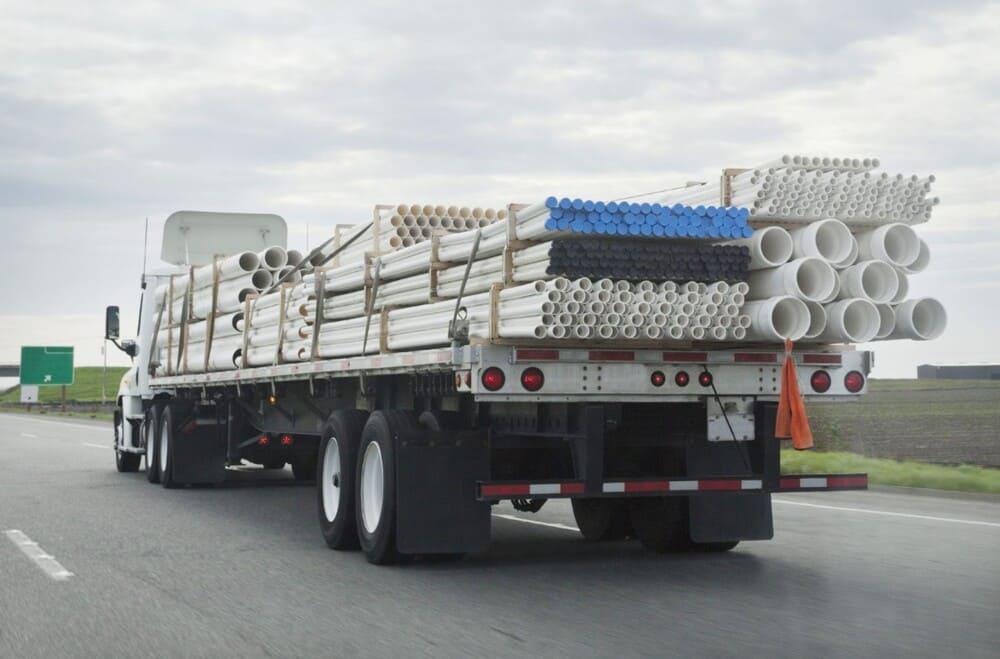
When inspecting the underside of a container, you will notice its well-designed features. Various slot holes located at the corners of the container may face different directions. Some sections may have over pins to assist with centering, but all are intended to accurately position the container on the flatbed trailer.
The most effective way to secure a car on a flatbed trailer is by using ratchet straps, which are alternatively referred to as tiedown straps. These straps are made of flexible and durable materials designed to withstand significant strain. They have hooks at each flatbed end and incorporate a ratcheting mechanism for tightening once the car is in position.
Familiarize yourself with each set of ratchet straps you use. It is important to have labels indicating the working load limit and break strength on each strap, so you can easily identify the maximum load capacity before starting your work.
When securing the car to the flatbed trailer, use axle or wheel straps designed specifically for this purpose. Let the strap go around the tire, pulling it down to ensure a secure fit. Take one end of the strap and thread it through the ratchet mechanism. Proceed to turn the handle multiple times to eliminate any looseness or slack. Attach the other end of the strap to the D-ring on the flatbed and tighten using the ratchet mechanism. The strap should press against the side of each tire to a certain degree while avoiding contact with the car’s body.
Attach an axle strap to the rear axle on one side of the differential casing for larger vehicles. Connect the other end to the D-ring and tighten. Repeat this process on the opposite side of the differential casing and secure the strap to the D-ring on the other side of the trailer.
Be careful when attaching and tightening the straps to prevent interference with brake fluid lines, cables, or other mechanical parts. In addition, it’s advisable to periodically check and readjust the straps after driving for 10 or 15 minutes since they may stretch initially when you hit the road.
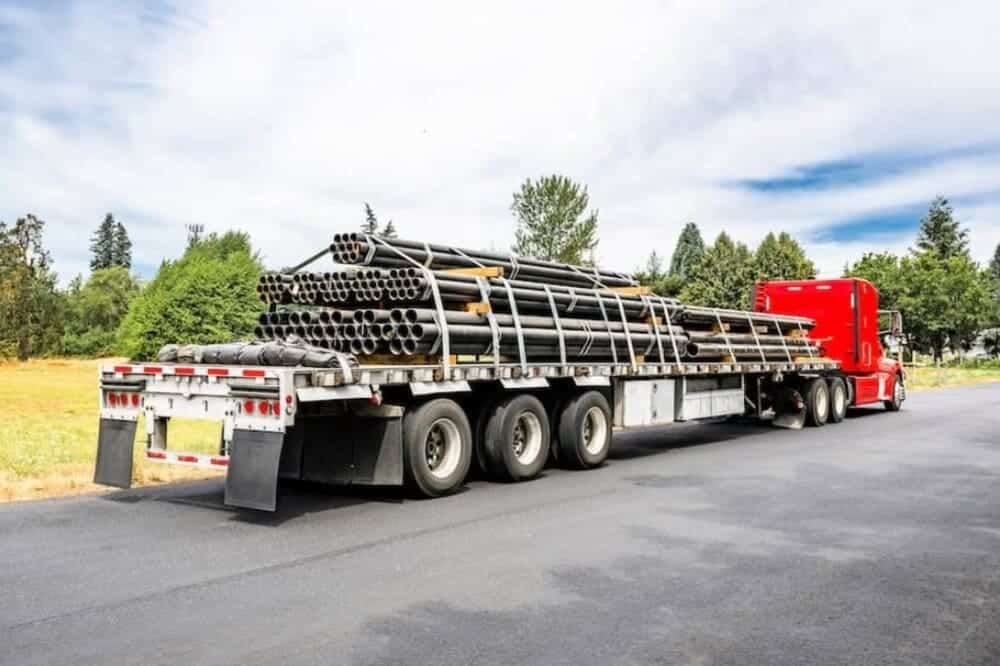
Ensuring the proper selection and use of straps to secure your motorcycle is crucial to its safety. Incorrect straps can potentially cause damage to your motorcycle or fail under excessive pressure. Therefore, it is vital to use the appropriate straps for the job. The ideal type of straps for this purpose are made of nylon and have a thickness ranging from 1.5 inches to 2 inches. This thickness ensures that the straps can handle heavy loads, even in the range of thousands of pounds. Additionally, the straps should feature ratchets or cam buckles, which facilitate easy tension adjustments.
A minimum of four straps is required for securing the motorcycle. Two straps are needed at the front of the trailer, while the other two should be placed at the rear. These straps are then attached to the hooks, with some slack left on the floor. When selecting connection points, it is important to choose spots at or near the bottom of the trailer and avoid using the side walls as connection points.
The next step involves positioning the motorcycle onto the flatbed. This can be achieved using the motorcycle’s mobility or stabilizer cart. Once the motorcycle is in position on the flatbed, lower the kickstand and reach for the two front straps. Start by securing the front side of the bike. Next, you can tie the motorcycle directly to the handlebars or loop the nylon straps over the handlebars. The latter method is preferable as it minimizes wear and tear compared to the former.
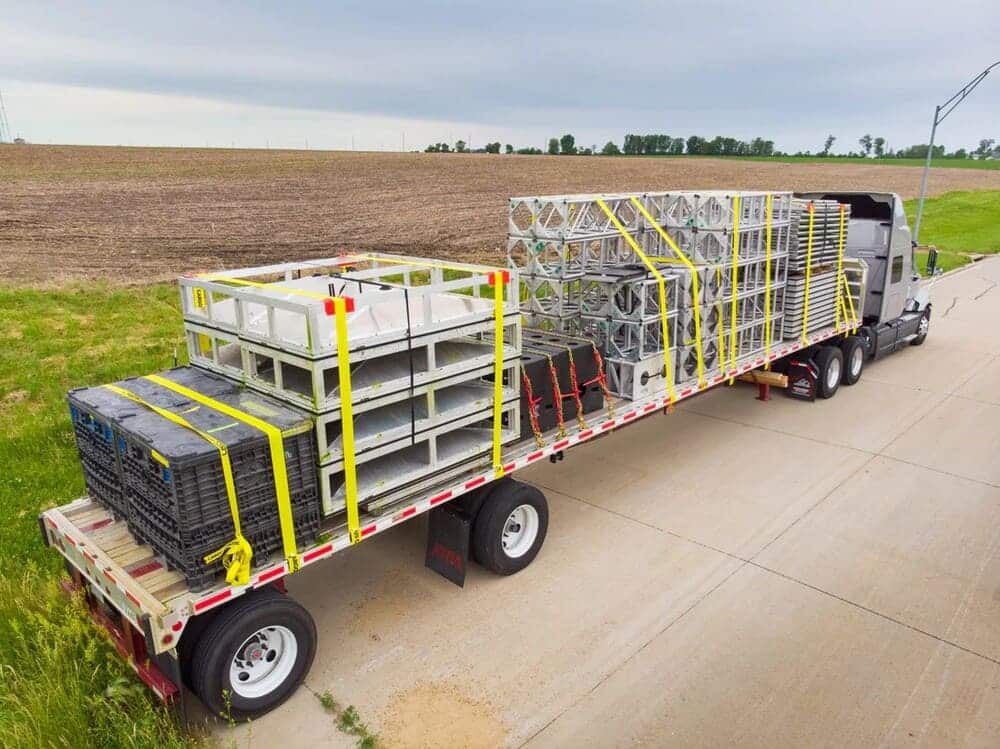
Before retracting the kickstand, ensure the bike stands vertically and securely. This can be achieved by alternately pulling on the front tie-downs while the kickstand is still in use. Once the kickstand is up, ratchet down the bike’s front part. Compress the forks to prevent bouncing when encountering bumps on the road, and adjust the tension equally on each side.
Always double-check if the bike is properly aligned vertically. Assess it from various angles, and if you notice any leaning on one side, readjust the straps. Loosen the tie-downs on the handlebars and make the necessary adjustments.
Next, use the tie-downs located at the rear of the motorcycle, ensuring they are secured to the frame only. Attaching them elsewhere could damage the bike’s features. Similar to the front tie-downs, ensuring equal tension on both sides is important. However, unlike the front tie-downs, the rear ones do not need to be compressed. Instead, their role is to prevent lateral movement of the bike.
If the bike is properly secured on the trailer, it should act as an extension. It would help if you also observed movement in the trailer when attempting to move the bike. If the motorbike is the only thing moving, it indicates insufficient security, and you should readjust the tension accordingly.
When hauling a forklift truck, it is recommended to load the machine in reverse, positioning the weight towards the front of the trailer for improved stability and performance. This is because most of the weight is concentrated in the counterbalance, located behind the driver’s seat during operation. Using this technique alters the weight distribution, resulting in a forward shift of the trailer’s center of gravity and the rig’s midpoint during transportation.
This configuration offers increased safety as the forks now face the rear. Consequently, the likelihood of the machine advancing and the forks penetrating the driver’s cabin during an accident is reduced. To properly load the machine, place it in the center of the flatbed with the tines in the recessed position and tilted forward. Disconnecting the fuel feed and battery terminal for maximum safety is crucial.
To secure the forklift during transport:
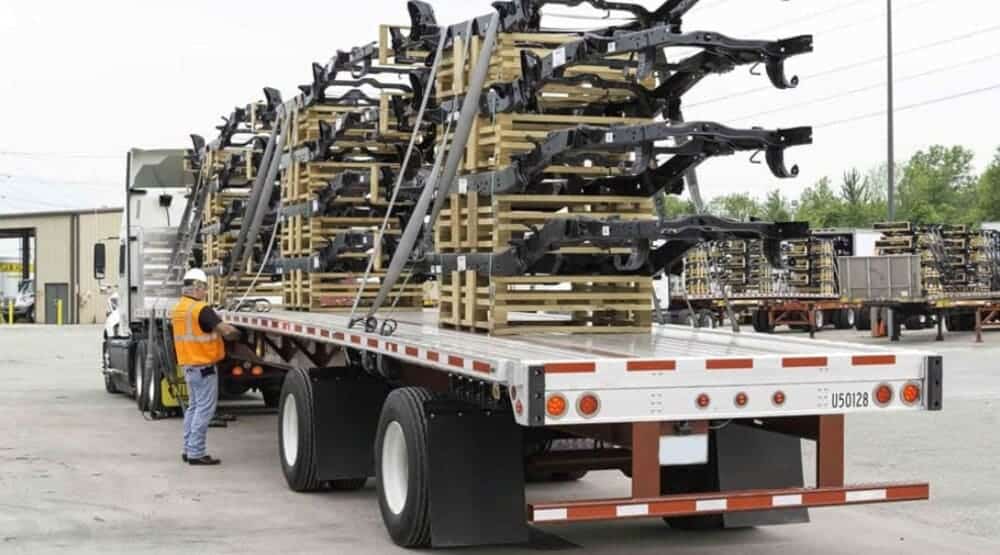
If your flatbed trailer is not connected to the flatbed, placing a nose jack underneath the front before loading is necessary. This precaution is vital to prevent the entire trailer from tipping forward, as the counterbalance constitutes the heaviest part of the machine.
With extensive experience as an expedited freight carrier specializing in flatbed transportation services, Fleet Care has in-depth knowledge of flatbed trailer load securement. We strictly adhere to all securement regulations, ensuring that our truck drivers are well-versed in the proper techniques to secure loads and items effectively, guaranteeing their safe and efficient delivery to their intended destinations.
Feel free to inquire about our cargo securement practices, whether you have a partial or full truckload. Our team is here to help you and address any queries you may have.
Test